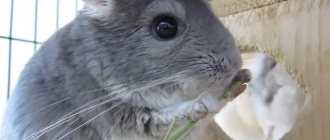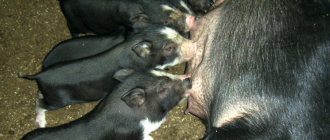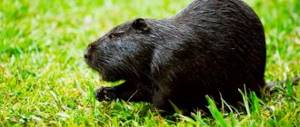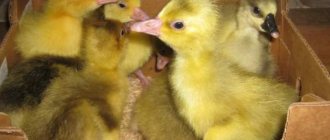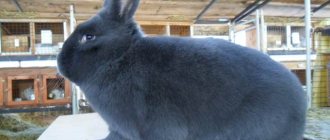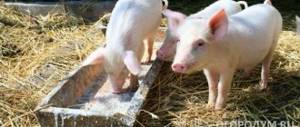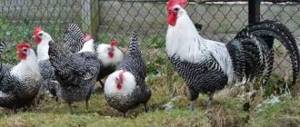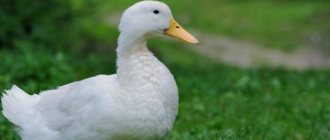The small rodent, native to the highlands of South America, has valuable and beautiful fur. For the sake of its expensive skin, the animals are kept on industrial farms. People appreciated the chinchilla's good disposition, unpretentiousness and funny appearance. Today it is a popular and affordable pet for most. Caring for a chinchilla is not difficult and is accessible even to inexperienced fauna lovers.
Chinchilla as a pet
There are two varieties of chinchillas - the short-tailed plain and the mountain long-tailed. It is the latter species that is kept as a pet. In terms of lifestyle and diet, rodents are close to squirrels, rabbits and hamsters.
A chinchilla should be kept in a spacious and comfortable cage, away from drafts and direct sunlight. Despite their thick fur, animals do not like the cold. Comfortable temperature for a rodent is from +15 to +27 degrees.
At home, a chinchilla lives from 10 to 20 years. Pets can be kept alone; they do not suffer from lack of communication with their fellow tribesmen.
The chinchilla is a nocturnal and rather shy animal. It must be taught to handle hands so that cleaning the cage and the necessary medical and hygienic procedures are not stressful for the animal.
Features and character of the animal
At home, with proper care, a chinchilla can live up to 15 years or more. Good news for those who don't like the smell of rodents: chinchillas do not have sweat glands, so there is no specific smell at all. However, of course, there is an odor from feces, so be prepared to wash the tray as needed.
The animal very quickly gets used to humans, it can be trained, and it rarely shows aggression.
It is interesting that the temperament of the animals varies. One individual can be playful and active, while another can be calm and not prone to games or showing emotions. You can see the character of an animal already at the purchase stage by observing it. Immediately choose a rodent whose behavior you like. Keep in mind that a healthy animal is always active.
Chinchillas also have features that not everyone will like. This is, first of all, a nocturnal lifestyle. You also need to take into account that they love to chew various objects. If you give the animal freedom to move around the apartment, he will immediately start looking for something to stretch his teeth on. It is impossible to wean him from this habit, so things need to be put away.
There is one more fun feature you need to know about. If you pick her up to play or pet her, and she has other plans at that moment, she may run away from your hands, leaving you with a clump of fur. Don’t be afraid: in three months the fur will definitely recover.
Choosing a cage for keeping
The pet can spend its entire life in a cage; it does not need long walks around the apartment. It is not recommended to let the animal roam freely around the house , this is dangerous for the animal.
To keep a chinchilla, you need to purchase or make your own cage. Most experienced owners choose multi-level display cages up to 200 cm high. Such a house looks like a closet with three blank walls and a mesh front.
Inside the cage there are shelf levels with ladders, ladders, pieces of driftwood or thick branches. Chinchillas love to climb up and down and are fun to watch.
The minimum size of a rodent's home is 100 by 80 by 90 cm , where 80 cm is the height of the cage ceiling. Only metal mesh is suitable for walls; animals will chew through plastic. The mesh should be square weave, with a mesh size of no more than 2 cm. The chinchilla can easily get out through the vertical bars of the birdcage by pushing the bars to the sides.
Accessories for cage equipment
In addition to shelves and ladders, inside the cage there are:
- feeder and automatic drinker;
- house for sleeping;
- litter tray (optional);
- mineral stone for pointing teeth and replenishing mineral reserves in the body.
All items inside the cage must be securely fastened. Rodents love to play, dragging things from place to place, creating a lot of noise. Considering that the chinchilla is a nocturnal animal, its games can cause a lot of inconvenience to its owners.
A special bunker container, preferably metal, is suitable as a feeder. Dry food is poured into the feeder once a day, the animal consumes food in small portions, without scattering food around the cage.
In addition to grain feed, chinchillas need hay. It is convenient to put dry grass in mangers - a type of feeder made of metal mesh. Pet stores sell special mesh balls where hay is placed, and the animals pull out blades of grass through the mesh. The mineral stone is attached to the wall of the cage using wire.
The standard automatic drinker is suitable - nipple. There is no need to be afraid that the animal will not figure out how to get water from the nipple. As a rule, a chinchilla finds a source of water within 24 hours after hanging the drinking bowl in the cage.
Special sand with the addition of zeolite is poured into the bottom of the cage, in which the animal enjoys bathing and cleaning its fur. To prevent sand from scattering to the sides, you can purchase a plastic container and pour sand there.
The pet house can be made of wood or plywood. For one animal, it is enough to make a bedroom measuring 30 by 20 by 20 cm. The entrance inside is made round, with a diameter of 8–10 cm. The house can be placed on one of the upper levels of the home.
For the toilet, select a plastic tray and hang it in one of the corners of the cage. Granular sawdust or cat litter is poured into the bottom.
Not all chinchillas can get used to going to the litter box; it depends on the individual characteristics of the animal. If your pet has not mastered this science, it doesn’t matter - these fluffy rodents have dry, odorless droppings.
Keeping chinchillas is not complete without providing the animal with toys. These could be wooden cubes (not covered with paint!), walnut shells, thick plastic pipes that animals love to run on.
Where to place the cage
A cage for keeping a chinchilla at home is installed in a quiet place, away from drafts and noise. Animals should not be placed near electrical or gas appliances or the cage should be placed on a windowsill.
A suitable place for rodents is a corner at the back of the room. It’s good if there are indoor plants with lush greenery nearby, this is calming and creates the illusion of a home.
Features of care
Chinchillas have long been tamed and feel comfortable in human society. They have a developed desire for socialization, so caring for their pet is more likely to become one of the pleasant worries than a duty.
Chinchilla diet
A balanced diet is the key to healthy chinchillas
These animals eat hay, special feed, nuts, barberries, rose hips, and dry bread crusts. They love fruits: plums and apples, and will not refuse raisins or dried apricots. When purchasing food, you need to make sure that the expiration date has not expired, and also study its composition. Hay ensures the normal functioning of the animal’s intestines. In summer, the diet can be diversified with a small amount of hazel, nettle, birch and apple tree branches.
Food is placed in the feeder once a day in the evening between 17.00 and 21.00. The chinchilla also consumes chalk, replenishing the content of mineral elements in its body. You should limit the amount of high-calorie foods, the consumption of which causes obesity. This negatively affects the reproductive ability of chinchillas.
Chinchillas must have constant access to water.
Bathing
Chinchillas can only swim in sand
To maintain their fur in proper condition, the animals take sand baths. For such a procedure, they need a special container - a bathing suit. This is a plastic or tin container measuring 20x20x30 cm. The bathing suit is placed in the cage twice a week for 30 minutes. It is not recommended to leave the container for a longer period, as the chinchilla may mistake it for a toilet, and the sand will need to be thrown away.
In addition, frequent sand baths dry out the animal's skin. A chinchilla bathing is quite a funny sight. If possible, a transparent container should be used to allow the procedure to be observed. You can make the container yourself from a three-liter jar or pan.
Water should not be used to bathe chinchillas.
The fur of these animals is highly dense, so it takes a long time to dry. Animals should not come into contact with liquid, as this can lead to their death.
Video: the process of bathing a chinchilla in the sand
Feeding the chinchilla
In their natural habitat, chinchillas eat grains, herbs, seeds, some fruits and vegetables, and sometimes insects. Animals have an extremely delicate digestive system, so it is better to feed pets with specialized mixtures.
Dry food
The ready-made mixture for feeding chinchillas consists of the following ingredients:
- several types of grain - corn, barley, wheat, oats, peas;
- seeds - flax, carob seeds, legume seeds;
- herbal granules;
- dried vegetables and fruits - carrots, pumpkin, apple;
- vitamins and microelements.
The grain in the finished feed can be processed and presented in the form of flakes and granules, which makes it easier to eat.
Suitable food for pets is selected experimentally, offering the animal several different brands. According to reviews from experienced chinchilla owners, the following brands are considered the most balanced food: Versele-Laga, Extra Vital, Vitacraft.
The norm of the finished mixture for one adult is 2 tablespoons per day.
You can feed your chinchilla at home with self-made grain mixtures with the addition of vegetables, fruits and hay. But this requires certain knowledge and the availability of quality ingredients. To prevent pets from getting sick, the grain is washed and calcined in the oven or in a dry frying pan before feeding.
Greenery
Fresh greens are healthy and are readily eaten by rodents. But before feeding, the grass must be withered so as not to provoke diarrhea and bloating. In the summer, domestic chinchillas are fed dandelion grass, nettle, burdock, quinoa, clover, chamomile, and strawberry leaves. Useful grains include bromegrass, black grass, oats, bluegrass, meadow fescue, and ryegrass.
It is useful to give your pets twigs of sea buckthorn, apple, and currant.
In winter, the animals germinate oats and barley; you can germinate “cat grass” seeds. It is useful to give thoroughly washed and dried parsley.
Berries and fruits
Fresh vegetables and fruits are given in limited quantities (a piece the size of a hazelnut) to avoid intestinal upset. Dried product is preferred.
The following vegetables are useful for the health of the animal: carrots, pumpkin, bell pepper, Jerusalem artichoke. The list of permitted fruits and berries is extensive: apple, pear, rowan, sea buckthorn, currants, raisins, strawberries and raspberries, rose hips, melon.
Nuts that are good for animals include: walnuts, peanuts, cashews, hazelnuts.
Hay
An important component of the chinchilla menu. Even when giving the animal ready-made food, it is necessary to provide the pet with fresh, aromatic hay. You can buy it at a pet store or prepare it yourself in the summer. For this, grass, cereals and legumes are collected. It is useful to add tansy, chamomile, and wormwood flowers to the hay. The hay must be dried in the shade so that it retains its color and aroma. It should be stored in bags in a dry place.
Salt lick and mineral stone
Like any rodent, a chinchilla's incisors grow throughout their lives. In nature, the animal constantly grinds down its teeth while foraging for food and digging holes in the ground. At home, stones and thick branches are needed for the chinchilla to prevent the teeth from growing too long. The pet eats crumbs that have broken off from stones, replenishing the supply of minerals in the body.
Mineral stones and lick salt contain calcium, sodium, phosphorus and other beneficial substances.
What foods are contraindicated for chinchillas?
All thermally processed food from the human table (bread, cereals, soups, sweets) is poison for the animal. It is acceptable to treat your pet with a small piece of fruit or vegetable:
- Potatoes are too high in calories and are not suitable for feeding a rodent.
- Do not give your chinchilla meat, fish or dairy products.
- Poisonous herbs include datura, buttercup, sedge, marigold, henbane, and fern.
What should be in the cage?
Without the right interior in a cage, the animal will quickly get bored. Therefore, keeping a chinchilla in an apartment requires not only purchasing a spacious cage, but also purchasing the right accessories for it. Ideally, they should all be made of wood and ceramics. This way, even if the pet decides to chew on its home, it will not get poisoned or injured.
House
The wooden house should be of such a size that the animal can easily climb into it. But it is important that there is a corner in it where an individual of any size can hide. The animal can spend a lot of time in the house. This is normal due to the nuances of chinchillas' temperature and their tendency to live in burrows.
You must learn to respect your pet's loneliness. Attempts to get him out of the house can lead to dissatisfaction or even an attempt to bite his hand.
Shelves
Chinchillas must have shelves in their cage. Cages are usually tall, so the space needs to be used properly. The shelves must be securely attached to the walls using special fasteners. There are no requests for material.
Reference! But usually they buy either solid wooden shelves or shelves upholstered with fabric.
The second option is quite controversial. This is due to the fact that the tissue can be eaten by the pet or changed due to its waste products.
Along with the shelves, you can install other entertainment for chinchillas. They like ladders that need to be installed at an angle. Another option is a perch in the form of a strong, large-diameter branch. Some chinchillas even like to sleep on these.
If the cage is particularly spacious, you can hang a large wall-mounted wheel in it. Your pet will happily run around in it; representatives of this species adore physical activity.
Tray
The list of pros and cons of keeping a chinchilla includes the fact that the animal can go to the litter box. Regular trays serve as toilets for chinchillas, but to save space, you can install a corner, more compact option.
Useful! The ideal material is ceramics.
The pet will not immediately understand what is required of him. To explain what the litter box is for, put on a glove and begin placing your four-legged pet's excrement into the litter box. It is important that the animal monitors your actions at this time. Over time, the rodent can learn to fit into the tray almost perfectly.
Food bowl
Among the features of caring for and keeping a chinchilla is the correct choice of bowl. The floor bowl is usually filled with grain or granular food. Such a bowl should be heavy, ideally ceramic.
Usually a second feeder is installed in the cage, already suspended and made of wood. Hay or fresh spikelets and herbs are placed in it, which chinchillas also need to consume regularly.
Mineral stone
The debate about whether a chinchilla needs a mineral stone or not continues. But still, this is a rodent that definitely needs to grind down its front teeth - they grow in chinchillas throughout their lives.
And the mineral stone will replenish the pet’s body’s need for nutrients. Consequently, his digestion will improve.
Drinking bowl
You can buy a drinking bowl for chinchillas at a pet store. It is important that it has a ball nose, so water will not drip onto the wool. Keeping a chinchilla at home with a drinking bowl that is unsuitable for average rodents simply will not work - the animal does not recognize water from a bowl.
Useful! The drinking bowl should be hung 10 centimeters from the floor of the cage.
Purified boiled water must be poured inside the device. Some owners even give the animal only purchased liquid.
Sand tank
The chinchilla needs a bath. But a pet cannot do this in water. To care for the fur, you need to buy the animal a large bath with sand. Screened seliolite sand can easily replace the volcanic dust that wild individuals use to clean their fur.
Reference! According to owner reviews, sand needs to be changed approximately every two weeks. This is because microorganisms that are dangerous to the animal can begin to develop in it.
Choosing the material that will cover the floor
According to some chinchilla breeders, the floor of the cage should be covered with a thick rug.
Useful! The ideal material is carpet with the shortest pile possible or wood.
Any tree will do, except coniferous species. Without flooring in the cage, the chinchilla will injure its sensitive and small paws on the bars.
If for some reason it is not possible to re-lay the floor in the cage, you need to cover the grate with a dense layer of sawdust. Sawdust is a good solution because it will eliminate odors. In addition, it will become easier to care for chinchilla fur - the likelihood of dermatological diseases and the appearance of parasites will almost disappear.
How to care for a chinchilla at home
Caring for chinchillas at home requires strict adherence to certain rules, but does not take much time. Animals do not need to be walked, they do not need to be washed. Particular attention should be paid to feeding and comfortable living conditions.
Rodent hair care
Caring for chinchilla fur at home is not difficult. The pet cleans and combs its own fur. It is the owner’s responsibility to provide the animal with the opportunity to swim in sand mixed with volcanic dust at least once a week.
To prevent sand from scattering throughout the house during bathing, the animal is seated in a special bathing area, where it can frolic to its heart's content. You can make the container yourself from an ordinary five-liter plastic bottle.
Cage care rules
Caring for chinchillas, provided they are provided with comfortable conditions, is not burdensome. Despite the almost complete absence of odor from the animal, it is recommended to clean the cage daily. The drinking bowl and feeders are washed every 3–5 days.
Once every 2–3 months, wash the bars and floors of the cage or wipe it with damp cloths. During this time, the animal is relocated to another shelter.
Do not use chemical cleaning agents when cleaning; you only need water and fragrance-free laundry soap.
Diseases and their prevention: how to care for a sick animal?
Many people wonder what diseases are inherent in chinchillas and what control measures and preventive measures should be used to prevent them? In the list of the most common diseases, veterinarians have identified the following:
- Gastrointestinal disorder. The root cause is low-quality food with an expired expiration date, incorrect feeding regimen when there is an excess of dry or succulent food, a sudden change in diet and diet. As a result, the animal is diagnosed with constipation or diarrhea, inflammation of the gastrointestinal tract, when the stool comes with blood in it. Be sure to show your pet to a doctor - he will examine your pet and recommend a course of treatment and diet.
- The chinchilla chews out its own fur, or if there are several animals in the cage, then from each other. The reasons for this behavior are different - itchy skin or harmful insects, lack of certain vitamins in the diet, especially protein. Show the animal to a doctor who will conduct an examination and take tests, or change the diet by introducing vitamin supplements into it, and also clean the cage more often.
- Dystrophy of liver cells due to obesity - here liver cells are replaced by adipose tissue. The reason is rancid, low-quality food, when the chinchilla’s body does not absorb carotene, excessively fatty food, and a large amount of nuts and seeds. The animal is simply fed - review the diet, minimizing fatty foods, choosing only high-quality, fresh food, and also put a wheel in the cage for your pet’s sports activities.
- The formation of stones in the genitourinary system may be caused by an incorrect diet. Stones can be identified through ultrasound - if they are small, when it is more like sand, then it will come out of the body on its own, if their size is larger - they are removed surgically.
- Sunstroke or hypothermia - the reasons are the incorrect temperature conditions for keeping the animal. Accordingly, remove the animal from a room that is too hot for it, from the sun, or transfer it to a warmer room. With such a problem, the animal will constantly lie down, its breathing will become intermittent and labored, it will lose consciousness - if this does not help, then you should show the chinchilla to a veterinarian, who will prescribe medications that increase blood flow and breathing.
- Conjunctivitis is an inflammation of the conjunctiva of the eyes of a chinchilla. The cause may be injury or chemical irritants, bacteria - show the animal to a doctor, who will prescribe treatment. In addition, clean the cage and treat it with antiseptics, and as a preventive measure and treatment, wash the eyes with a 3% solution of boric acid, or a decoction of chamomile, plus drops that contain antibiotics.
- Catarrh of the nose - this disease in chinchillas manifests itself when the weather changes, during sudden temperature fluctuations, if there is a strong draft in the room. In this case, mucus will leak from the animal’s nasal passages, the eyes will water, and white or yellow discharge will accumulate in the corners. The chinchilla eats little, frequent breathing and an increase in temperature aggravate its condition. In this case, keep the animal in a dry room, wash the eyes with a solution of boric acid, give food rich in vitamin C, and consult a veterinarian.
- Wounds that occur as a result of injury between animals during a fight, or when they come into contact with a sharp edge of a shelf in a cage. If the wounds are superficial, they heal on their own, without outside help, but if it is a deep wound, consult a doctor for washing and treatment to avoid infection and inflammation.
- Dental problems . As the animal grows, chinchillas may experience problems with their teeth - excessive growth and periodontal disease. The growth of teeth and the animal’s inability to grind them down leads to problems with bite and nutrition, chewing food and, as a result, problems with the gastrointestinal tract. Remember also that chinchillas’ teeth have an open root - so they grow constantly, and if there is a lack of vitamins A and D and calcium in the diet, the teeth will grow too quickly. In this case, it is worth correcting the teeth - simply by cutting them down in a medical facility and constantly giving the animal hard twigs and products for grinding down the teeth.
If you have the slightest suspicion of health problems with your chinchilla, immediately contact a veterinarian and carry out the necessary examination, examination, and course of treatment. You should never hesitate - the sooner a diagnosis is made and treatment is prescribed, the better the treatment outcome will be.
Chinchilla in the wild
Features of training
The behavior of chinchillas characterizes them as loners who do not feel the need to communicate with other individuals or humans. An animal will never become as devoted to its owner as a cat or dog. But, if you accustom a rodent to hands and voice from an early age, the animal will be able to recognize its owner and greet him with a whistle.
How to accustom to hands
Keeping a chinchilla in an apartment is impossible without close physical contact between the pet and the owner. Sometimes the animal needs to be transplanted into another cage and undergo a veterinary examination. It is easier to do this if the animal is not afraid and does not break out of your hands.
The first step to establishing contact with a rodent is to offer it a treat from your hand . The chinchilla is curious and has a keen sense of smell; she will definitely smell a tasty piece and come out of hiding to taste it. If you do not make sudden movements or scream, a sated animal will not run into the house, but will sniff the owner’s hands and even allow itself to be scratched.
When stroking your pet, do not press on its back and sides, or grab its tail. The rodent will perceive these actions as an attempt on his life by a predator and will be afraid. Good places for scratching are the neck, chest, and head.
You cannot hold an animal in your hands against its will. A frightened chinchilla screams loudly and, breaking free, can injure itself or bite a person.
How to train yourself to sleep at night
The nocturnal rodent can adapt to the routine of its owners, staying awake during the day and falling asleep in the evening. You need to accustom your pet to a new regime gradually, providing him with activity in the afternoon and evening. Having played enough and run around, the chinchilla will get tired and go to bed.
Proper taming of an animal
A young animal that has just moved to a new owner is very shy and timid, so when approaching the cage you should not make sudden movements or try to pick up the animal. You need to open the door carefully, avoiding frightening sounds and gestures, you need to strive so that the animal stops hiding in its house when a person approaches.
After several days of leisurely acquaintance and remote contact, you can try giving your pet a treat in your open palm. Within one or two weeks, the furry animal will get used to your hands and will no longer be afraid of them. Only then can you try to place the chinchilla in your palm. You should not lift the animal by the scruff of the neck; such an action may be associated with a snake attack and cause an aggressive reaction on the part of the pet.
Breeding at home
To obtain offspring at home, you must have a male and a female that are not related to each other. The suitable age of animals for the first mating is 8–10 months. Earlier coverage leads to the birth of weak offspring.
For mating, chinchillas are kept together in a spacious cage. It happens that animals do not like each other and fight, causing serious injuries. When a partner changes, a family can develop, and the animals will live together amicably all their lives.
The female comes into heat every 30–40 days. Pregnancy lasts 105–115 days, childbirth occurs quickly and does not require human intervention. 1–3, rarely 4–5, puppies are born. In case of multiple litters, some of the babies will have to be artificially fed, since the female has milk nipples only 2 out of 6.
Immediately after giving birth, the male is separated from the female, since he can cover her within a few days after whelping, which is unacceptable. A healthy chinchilla should produce offspring no more than 2 times a year.
Already on the 3rd day of life, babies show interest in hay and need clean water, so hay and a drinking bowl are placed in a cage at a low height, accessible to puppies.
Cubs are born weighing 40–60 g and gain 1–2 g daily. At the age of 40–60 days, the offspring eat “adult” food and are ready to be deposited from the parent in a separate cage.
Chinchilla cage
The cage must be equipped with various accessories, namely:
- Shelves.
- Feeder.
- Drinking bowl.
The shelves in the cage on which the animal will jump should be made of hardwood, except coniferous.
The feeder and drinkers should never be placed on the floor, but must be attached to the walls of the cage. It is best to choose feeders from metal or ceramics, and the drinking bowl should have a spout with a ball so that water does not get on the pet’s fluffy fur.
Be sure to put a mineral or salt stone in the cage, on which the animal will sharpen its front teeth, which grow throughout its life.
Accessories and the cage should be cleaned and disinfected every two to three days. It is best to do this with baking soda, followed by rinsing with water.
Pros and cons of living in an apartment
When planning to purchase this cute animal, you need to consider all the pros and cons of keeping animals at home. Arguments in favor include the following:
- chinchilla is unpretentious to living conditions;
- practically odorless, does not shed;
- rarely shows aggression towards humans;
- has a cute appearance and a skin that is pleasant to the touch.
The disadvantages of this pet include:
- nocturnal lifestyle;
- exposure to stress;
- Difficulties with veterinary care due to the rarity of the spread.
You should get an animal only after weighing the pros and cons and soberly assessing your capabilities. In addition to the cost of purchasing an animal, funds will be required to purchase a cage, accessories and food.
What is the best microclimate to organize for rodents in an apartment?
It is very important to have air conditioning in your home if you live in hot climates. High temperatures have a detrimental effect on chinchillas. In this regard, caring for a chinchilla at home presents some difficulties. The best temperature parameter for animals is +17, +22° Celsius. The minimum temperature should not fall below 14°, and the maximum should not rise above 28°. But this high should not last long. At a room temperature of about 29-30°, the chinchilla quickly dies due to heat stroke.
Prolonged exposure to sunlight has a negative effect on the health of rodents. Sunbathing can be done for pets for 10-15 minutes during the daytime. In case of heat stroke, the animal should be cooled using a container of frozen or very cool water. Chinchillas also do not like drafts. So it is better to install the cage in places that are safe in this regard.
Chinchillas do not tolerate loud noise well, so home care also includes limiting the strength of the background sound. Animals are easily frightened by sharp, loud sounds, but they can get used to TV shows and keep you company while watching. But ideally, the best conditions are peace and quiet.
